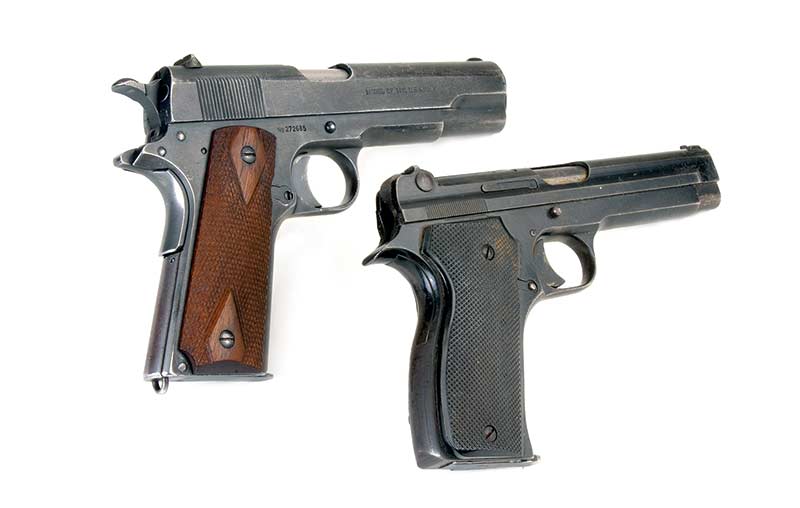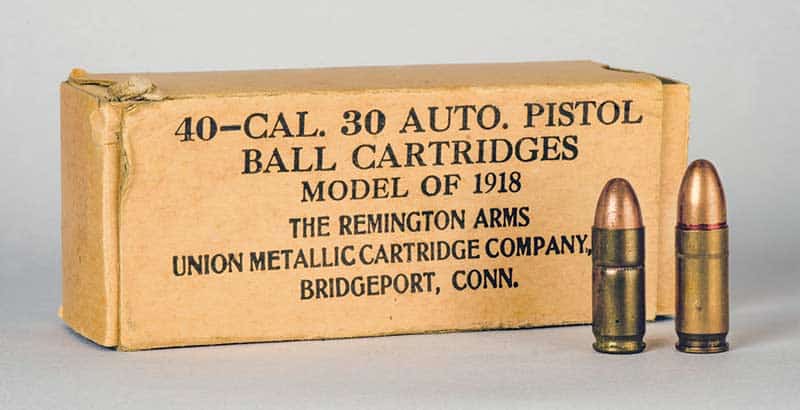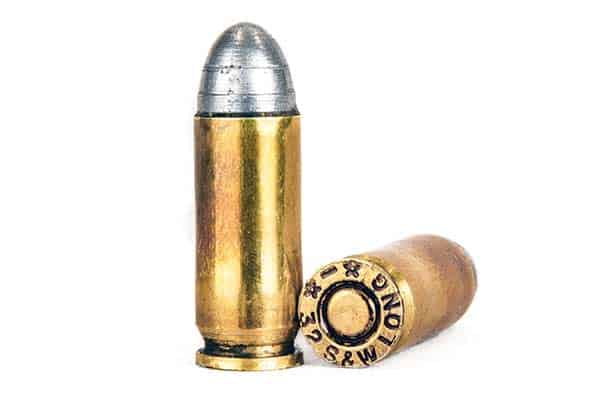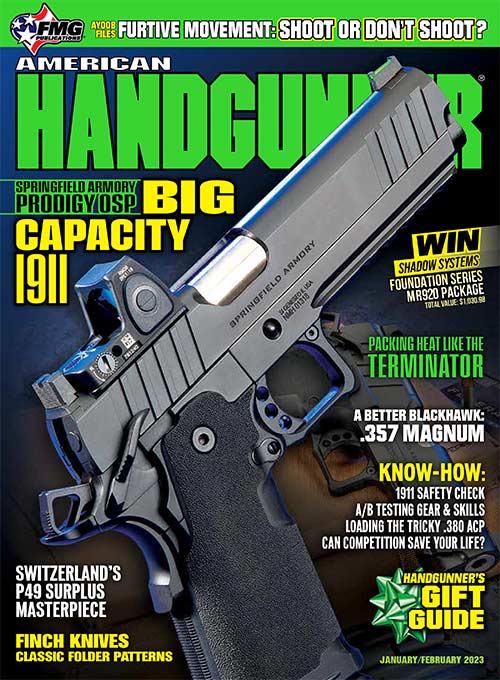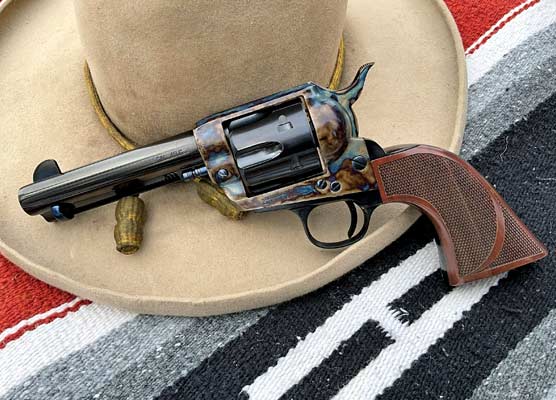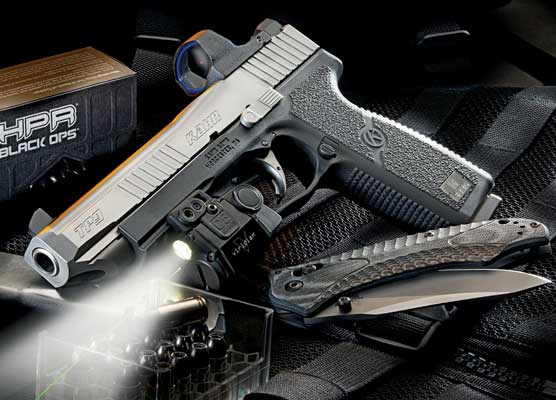Shooting Iron:
The .30 Super Carry Back Story
There is much hoopla in the firearms press about the new .30 Super Carry and the handguns being built for it. I don’t own one of the pistols, have never seen one of the cartridges and doubt I ever will shoot a .30 Super Carry. This isn’t being ugly; it’s just the Way of the Dinosaur. (That’s me.)
The Pedersen Device
But I can give you some interesting backstory. Let’s return to 1917/1918. The U.S. Army was embroiled in World War I’s trench warfare. Invading German trenches with five-round capacity Model 1903 Springfield rifles battle-zeroed for 547 yards and fighting at off-the-muzzle ranges just wasn’t an optimal situation. Especially considering the Germans had thousands of their 8″-barreled P08 “Artillery” 9mm Lugers with 32-round drum magazines with which to shoot back. Of course, the reverse was true when German Sturm Truppen landed in Doughboy trenches.
Therefore, a solution to the U.S Army’s dilemma was envisioned in 1917 by noted arms designer J.D. Pedersen. On his own, he developed a device that could be fitted to M1903 .30-06 Springfield rifles converting them from bolt action, five-round shooters to semi-auto, 40-round shooters. U.S. Army officials were wild about the idea.
However, the Pedersen Device necessitated a new cartridge. Mr. Pedersen had developed it too. It used a rimless case, 0.78″ long with a 0.308″, 80-grain bullet giving nominal velocity from an M1903’s 24″ barrel of 1,300 fps. The U.S. government christened it with the lengthy name of U.S .30 Auto Pistol Model of 1918. (The words “Auto Pistol” were used to fool German spies.)
The Pedersen Device fed those rounds from an awkward-looking magazine angled from the top right of special Mark I M1903s and ejected fired cartridges through a port on the action’s left side. Pedersen Devices and its “.30 Auto Pistol” ammunition made it to France but hostilities ended before them seeing action.
The French Go .30
Now we’re into the mid-1930s. A French engineer named Charles Petter, working for Societe Alsacienne de Constructions Mechaniques (SACM), designed a new pistol for the French Army. Although it vaguely resembled the American U.S. Model 1911, it was petite in comparison. Barrel length was 4.30″ with a weight of only 26 oz. Chambering was for a likewise petite cartridge called 7.65mm Longue (Long). Have you figured out where I’m heading here? That’s right, the “new” French cartridge had a rimless case of 0.78″ length, with an 85-grain bullet at a nominal velocity of about 1,100 fps. Evidently, the French had obtained some of the U.S. .30 Auto Pistol Model of 1918 ammunition and liked it, except they increased the bullet diameter to 0.310/0.311″.
France’s new military pistol was designated Model 1935A. It is a delight to handle with a slightly curved grip frame that fits hands better than most straight grips. Also, its checkered black plastic grips are comfortable. Safety is a hammer block type. Flip it up and solid steel blocks the hammer from hitting its firing pin. A magazine disconnect doesn’t allow the pistol to fire if its magazine is absent. Sights are simple: a small blade front dovetailed to the slide and notched rear machined integral with the slide. What ruins its aesthetics is a baked-on, black paint finish.
Are you wondering why I’m so familiar with the French Model 1935A? The story is too long to detail here, but I got my first while in my teens and sold it long ago. I bought another in 2010. I managed to purchase some original French ammo with the newest one. In sealed boxes and looking pristine, not one round of it would fire. My shooting has been chiefly with cast bullets from Lyman mold #313249, sized to 0.313″ and weighing 81 grains. Brass is brand-new from Starline. In fact, I use properly adjusted .32 Auto reloading dies. My velocities are running around 1,100 fps, depending on the exact handload.
What Comes Around, Goes Around
So how does this connect to the new .30 Super Carry? Well, the new case is rimless, 0.827″ long and loaded with 100- to 115-grain, 0.313″ jacketed bullets. The velocity quotes I see mention 1,250 fps but with stupendous pressures of 45,000 psi. By comparison, the maximum 9mm Luger pressures are 35,000 psi. Is the .30 Super Carry just a copy of the old U.S. .30 Auto Pistol Model 1918 round but made a mite longer for safety’s sake? Supposedly not. Regardless, there is definitely a backstory worth considering.

